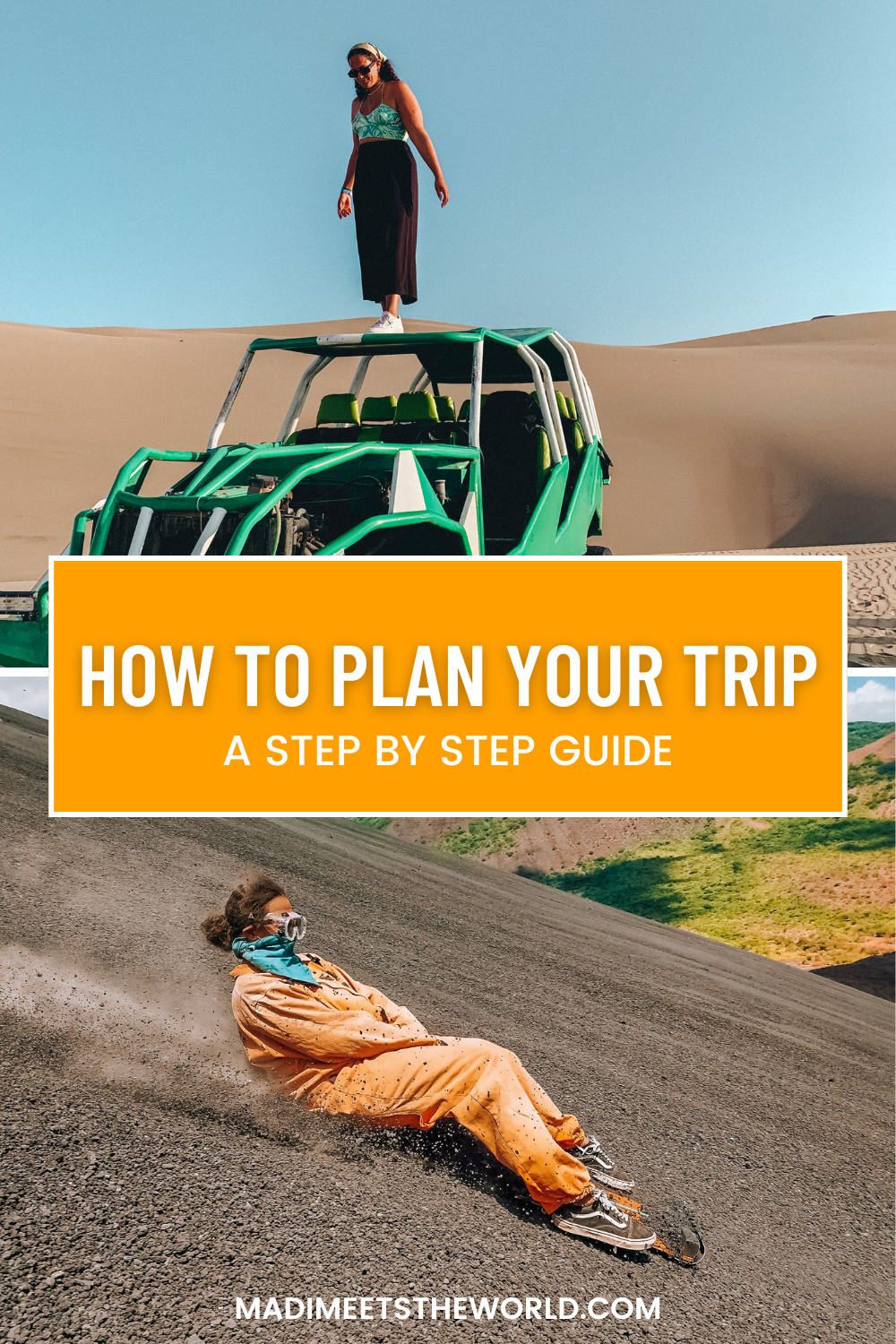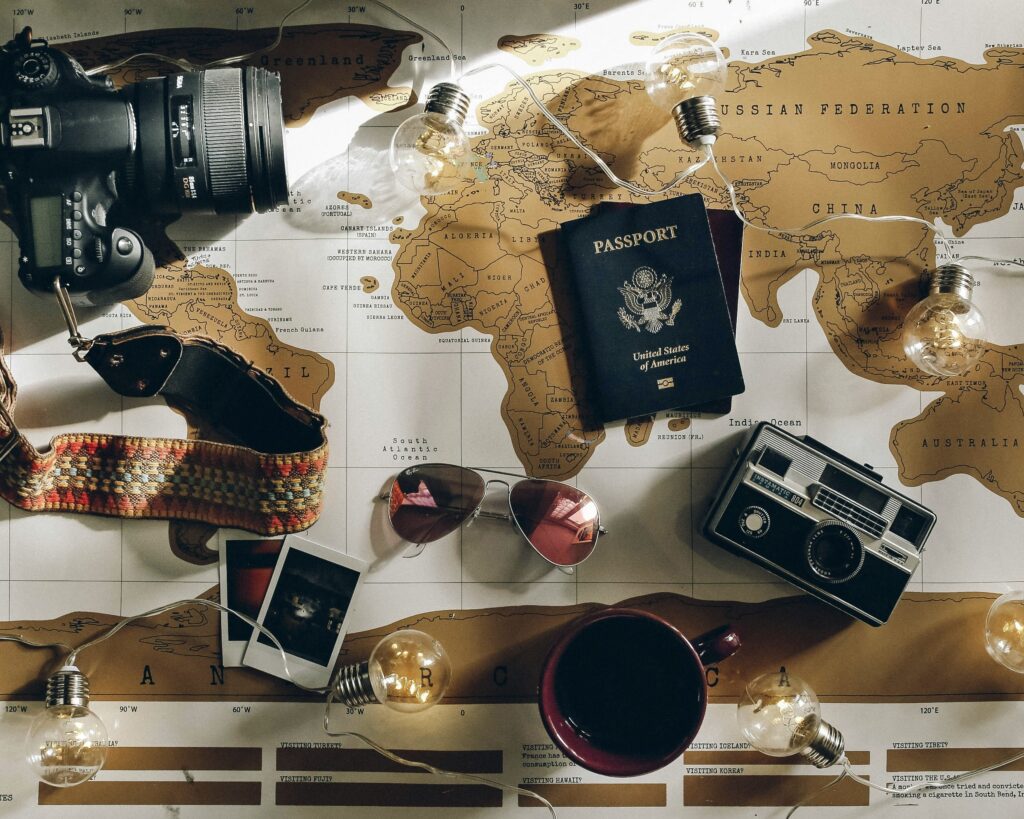Have you ever felt lost and unsure about how to plan your trip or wondered where to even start? You are not alone! Planning a solo backpacking trip can be both exciting and nerve-wracking, especially if it’s your first time. You might be overwhelmed trying to figure out all the things you need to prepare. But don’t worry, I’ve got you! This step-by-step guide is designed to help you navigate all the ins and outs of planning your trip, so no matter where your journey takes you, you’ll be well-equipped and ready for an amazing adventure.
1. Choose your Destination

First and most importantly, you need to decide where you want to go. This is probably one of the most exciting parts of trip planning because you have the whole world to choose from. Knowing which country you’re going to will not only allow you to properly plan your trip but will also motivate you to save money because you have a specific goal to work towards. You know exactly what to look forward to, rather than when you only have a vague plan of wanting to travel in general.
While having so many countries to choose from is great, it can also make it difficult to decide on a travel destination. Personally, I find inspiration from platforms like TikTok, Instagram, and YouTube, as well as from travel blogs and websites. It can also be helpful to ask friends and family for recommendations based on their own travel experiences.
When you’re trying to decide where to go on a budget-friendly trip, there are a few key things to keep in mind. First of all, it’s important to choose a destination that won’t break the bank when it comes to accommodations, food, transportation, and activities. You’ll also want to consider how comfortable you feel with travel, as some places are easier to navigate than others. If you have your heart set on a certain activity, like surfing or diving, make sure to choose a destination that offers those experiences and check out the prices. Lastly, think about the cost of flights when making your decision. Doing a quick price comparison can help you avoid disappointment later on or even help you choose between different destinations based on the flight prices.
2. Decide the Time and Length of Your Trip
To plan your budget and start booking, you have to decide on the duration and timing of your trip. Start by researching recommended lengths for staying in your chosen destination. Consider your other commitments, such as work or school, if you have any, and find out how much time you are able to take off.
Depending on how flexible you are, check for the best times to visit (dry season, summer, etc.). However, if your schedule does not allow you to travel in summer or dry season, don’t worry! I’ve traveled to many places in Southeast Asia during wet and burning seasons and still had an amazing time!
3. Set a Budget
After you have decided on your destination and the duration of your trip, it is important to determine your budget. You should research the average daily costs of your destination, flight prices, and the prices of any major activities that you plan to do. Additionally, it is always a good idea to set aside some extra money for unexpected expenses.
Having a specific amount also helps a lot when saving up for your trip!
4. Start Saving Money
One of the most important things is actually saving money. Starting early is key! The earlier you start saving, the easier it will be to reach your goal. It will also allow you to book your flights far enough in advance to avoid expensive flights.
5. Do Your Research and start Planning


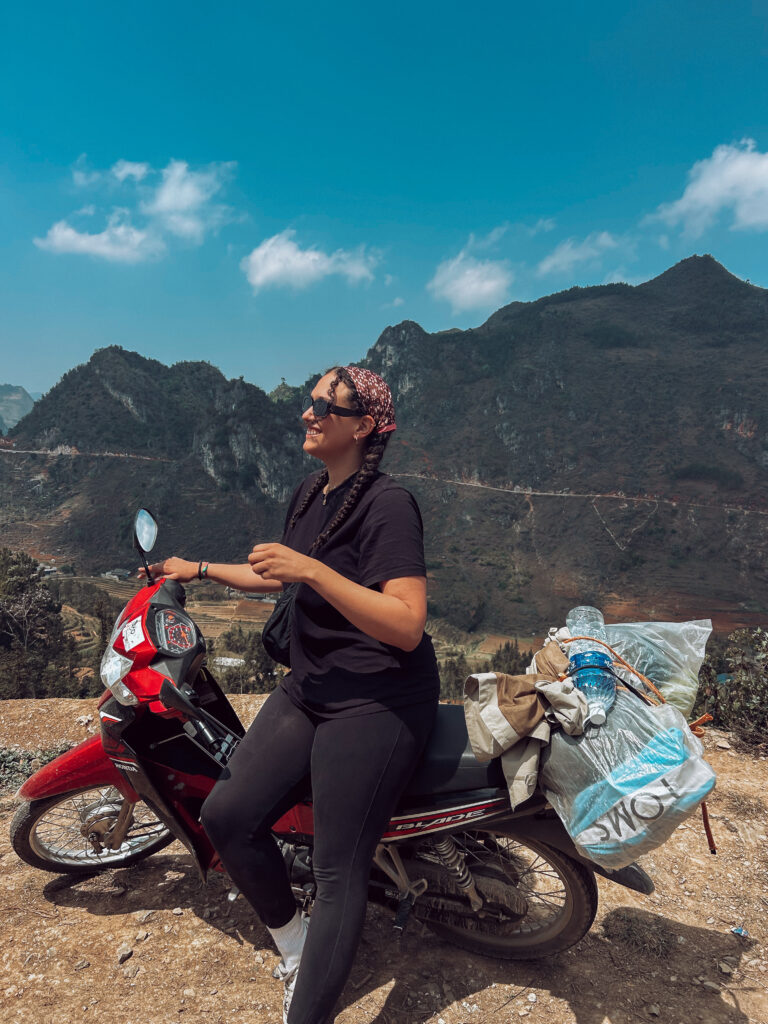
Alright, let’s dive into the fun part—getting down to the nitty-gritty of planning your trip! It’s time to get excited and figure out all the places you want to visit, the best activities, food spots, places to stay, and how to get from one place to another. Take your time and decide on the duration of your stay in each place. You can plan in as much or as little detail as you like, but I would recommend not overdoing it. Just make a list of all the things you would like to do and see, to help you create a rough itinerary that allows you to stay flexible. While travelling, you will meet new people and come across new places or activities, so it’s good to remain open-minded to changing your plans.
Also, remember that even if there are endless things to do and places to see, it’s important not to pack too much into your itinerary. You want to enjoy your trip and not rush through it.
If you are struggling to figure out the best routes or need some inspiration, you can find plenty of sample itineraries online to help you with that. Happy planning!
6. Start Booking
Alright, so now that you know the whens and wheres of your trip and you have saved some money, it is time to start booking. However, remember to stay flexible, so don’t just start booking all the accommodation, transport, and activities of your entire trip! Only book the essentials, such as flights, activities that require advance booking, and the first few days of accommodation. Booking too far ahead may leave you disappointed if you are unable to change your plans, or it may even cause you to spend more money if you are like me and would rather pay for a new flight to stay in that place that you just love than get on the plane the next day.
7. Important! Visas, Vaccination, Credit Card, Insurance
Now this part is not so fun but very important!
Make sure to check out the visa requirements for your destination. You can usually find this information on the embassy’s website. You want to apply for visas early enough, as some may take a few days or weeks to process. You will also need passport pictures for visas in some countries, like Cambodia. So make sure you have a couple with you.
Next, you want to keep all of your routine vaccinations up-to-date and check which vaccinations are necessary or recommended for the country or countries you’ll be visiting. Some countries require proof of certain vaccinations, so be sure to keep all your documents in order. Start this process at least 6–8 weeks before your trip, as some vaccines need to be administered well in advance to allow your body to build immunity, and some require multiple doses spread over several weeks.
Even though you might think you are healthy and nothing is going to happen to you on your travels, getting travel insurance is essential, and you should not travel without it. You never know what could happen. I have seen it so many times: people get food poisoning, break bones, crash scooters, and so on. So don’t risk it and get travel inspiration.
Don’t forget to check your passport! Make sure it’s valid for the duration of your trip. Many countries require a minimum of 6 months of validity upon entry, so double-check your passport’s expiration date. It will also be handy to have 1-2 copies of your passport printed, or at least on your phone, just in case.
Finally, get a credit card that doesn’t charge additional fees for foreign transactions or withdrawals. Debit cards can be expensive and may not be accepted for all transactions, including flight bookings. Also, inform your bank of your travel plans so your card doesn’t get blocked while you’re abroad.
By following these tips, you can ensure a smooth and stress-free travel experience.
8. Make an Arrival Plan

When arriving in a new country for the first time, you might feel anxious and nervous. Thoughts like “What if I get lost?” or “What if I get scammed?” are perfectly normal. I still get them whenever I go to a new place. Creating a detailed arrival plan will help ease some of these worries.
While planning for your arrival, you should decide on the best way to get to your accommodation, research how much it should cost, and learn how to handle taxi drivers who try to overcharge you. Tip: refuse to accept a ride unless they turn the metre on. Alternatively, you can use Grab or Uber, so you will know how much you are paying beforehand.
You should also think about where and how to get the local currency. I usually use an airport ATM, but the fees are usually higher, so I only withdraw a small amount for the taxi and some extra for finding a cheaper option in town.
Also, it’s a good idea to take a screenshot of the name and address of where you are staying (in the local language if possible), as well as the booking confirmations. By doing this, you will have everything you need to check into your room, even if you have trouble connecting to WiFi, which is the most important thing on Day 1.
9. Start Packing
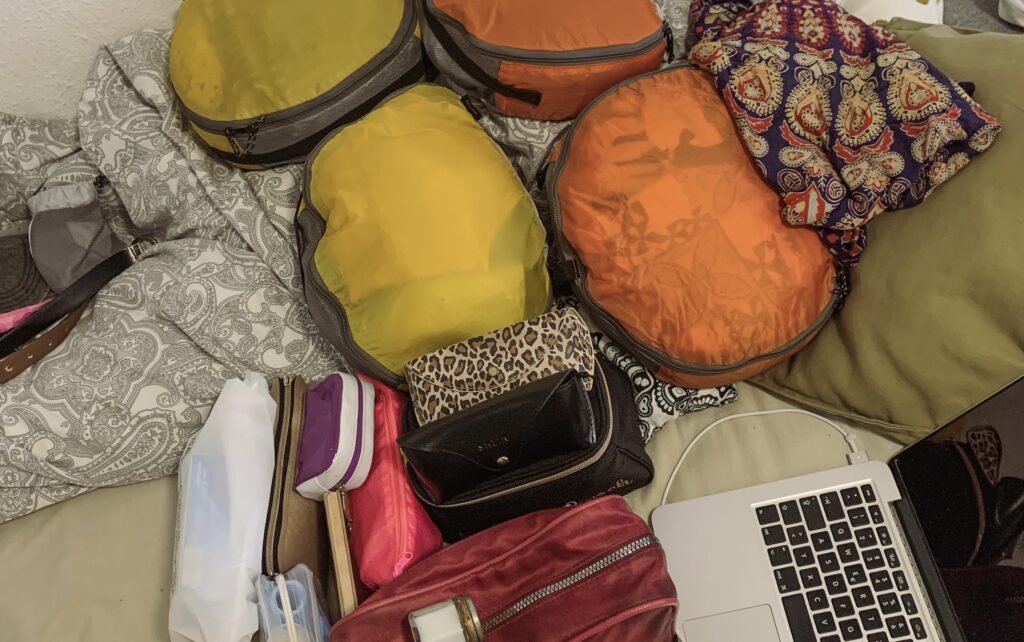
You are finally done planning, and your trip is coming up very soon. It’s time to start packing! You might be tempted to bring a lot more than you will actually need, but remember that it’s best to avoid bringing things “just in case.” Most things that you may need during your travels can usually be found at your destination. Plus, you don’t want to overpack and end up carrying way too much! So, try to pack light and keep it simple. You also want to leave some room to be able to buy things while traveling. A 50-litre backpack along with a smaller day bag is usually enough to carry your necessities. And don’t worry about packing too many clothes, as you can always do your laundry overseas. So, packing for 7–10 days should be enough for any length of trip.
10. Have the Time of Your Life
Congratulations! You have made it! All the planning is done, and now it’s time to head to the airport, board the plane, head out into the world, and start your adventure. You have earned it!
Don’t worry if you feel anxious and nervous. Every traveller goes through these feelings. But there is nothing to worry about. Trust in your planning, follow your gut, and have the best time of your life!
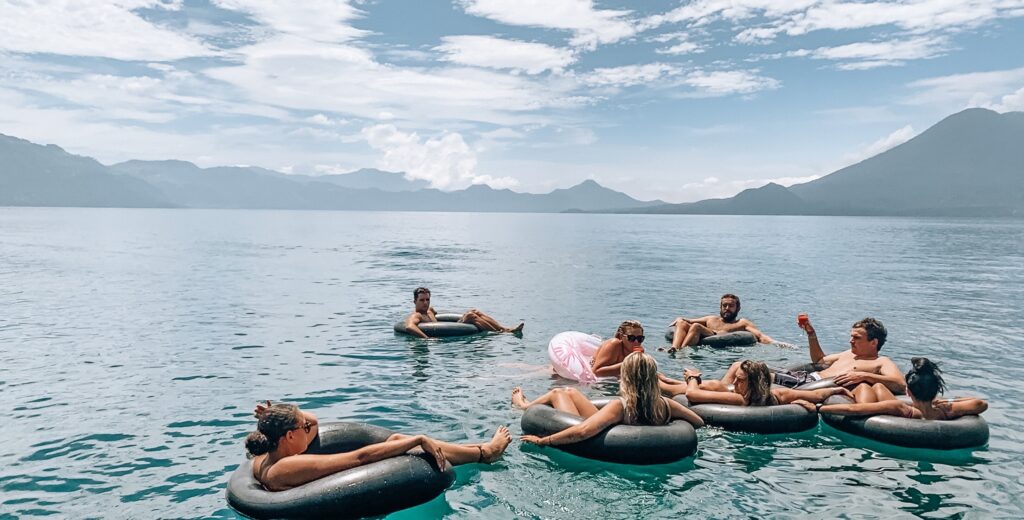
Pin this post for later
